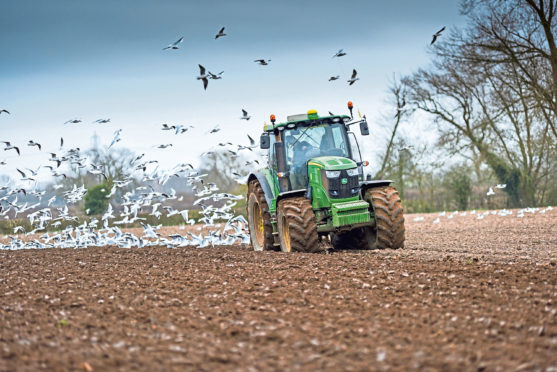A project that measures the sustainability of farming activity in Scotland is to launch after nearly five years of research and planning.
The Scottish Agricultural Organisation Society (SAOS) will soon unveil the CarbonPositive platform, which maps the various ways farmers are reducing greenhouse gas emissions, sequestering carbon and supporting “natural capital”.
The data will ensure there is the opportunity to properly evaluate both agricultural emissions and sequestration when it comes to UK greenhouse gas inventories which inform Scotland and the UK’s binding net-zero carbon emission targets.
This is particularly important as the UK sets its own land and farming incentives and payment schemes following withdrawal from the European Common Agricultural Policy (Cap).
Emma Patterson Taylor leads the project on behalf of SAOS, Scotland’s experts in co-operation and collaboration, which is owned by around 60 member co-operatives which have a collective turnover of around £1.5 billion, according to its most recent annual report.
Ms Patterson Taylor said the programme’s aim was to highlight the benefits farming can bring, whether it is through stewardship of forest, soil or waterways and the adoption of renewable energy schemes.
Biodiversity and the ways farmland provides access to nature for recreation and wellbeing is also a focus.
A similar but separate project to scope emission performance of livestock, also managed by SAOS and in partnership with ANM Group, is running alongside.
“Historically farmers have tended to feel a bit bashed over the head by the environmental lobby,” said Ms Patterson Taylor.
“We are trying to tackle that and celebrate the positive role that farmers play and use that starting point to leverage and drive change at farm level.
“We want to help farmers see what they are doing well so they can do even more, better.
“We will also move on to the educational piece to build a greater understanding by farmers and the public, of the role farmers play in relation to climate change.
“That is the aspiration and what we are all about.”
SAOS have identified that two-thirds of Scotland’s renewable output every year comes from renewable initiatives on farms and have built partnerships with key experts to identify the data sets that will make up the CarbonPositive platform.
These include James Hutton Institute, Forest Research and Scottish Environment Protection Agency.
“Under our key activity areas – soil, woodland, energy, biodiversity, water and recreation – we have worked over the last few years to build relationships with experts and institutions,” she said.
“We are using a mapping approach to tell a story.
“Every single farm in Scotland will have their own profile and they will have associated activities for their farming business.
“For example, every farmer will have soil and a soil carbon story associated with their farm.
“If they have woodland that will also appear.”
Ms Patterson Taylor added: “If they have a renewable initiative, those will be identified and can be updated.
“If they are on a protected biodiversity managed area, that will be there. Water quality if they have a river running through their land and so on.”
Once the site is formally launched farmers will be invited to view their own farm profile and update that with their own information, if they would like to.
For example, they could add soil sampling results or figures from their most recent renewable energy tariff statement.
